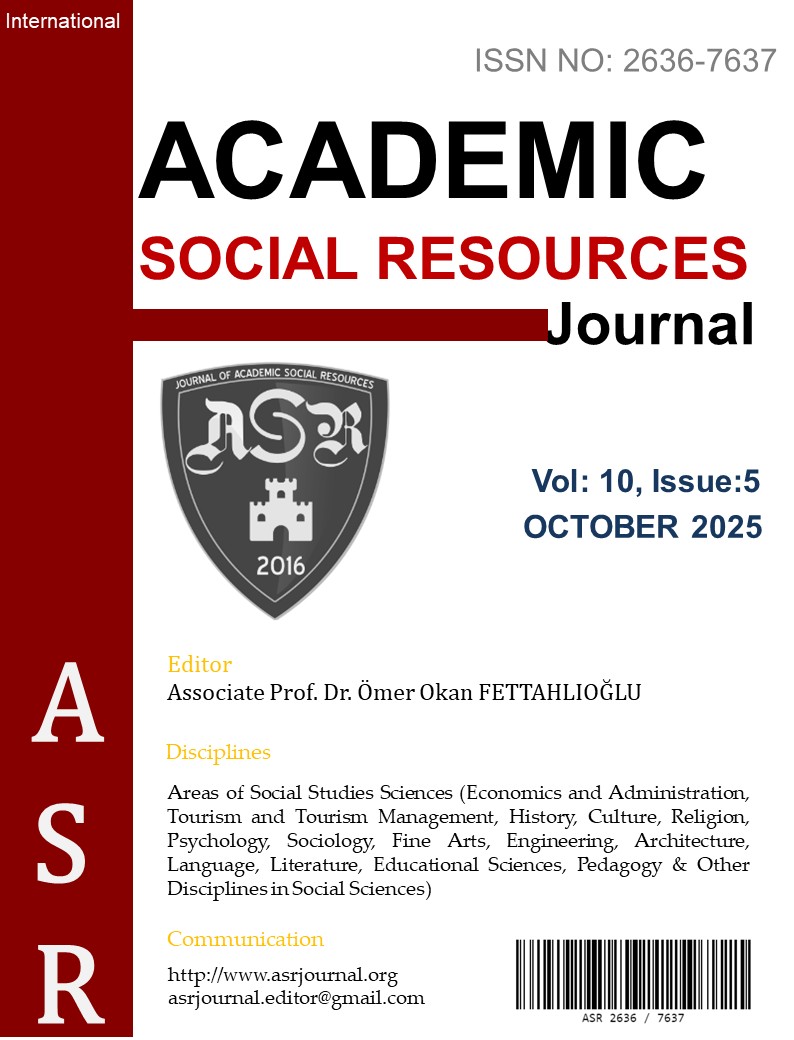Author :
Abstract
19. yüzyıldan itibaren önemli gelişmeler gösteren teknolojik ve bilimsel değişimler, kültürel ve sosyal koşulları da etkilemiştir. Gelişen modernist dünya kültürü, düşünce ve sanat alanında da önemli ilerlemeler kaydetmiştir.
Modernleşme süreci, yeni dünya görüşleri ve düşünce sistemlerini ortaya çıkaran felsefe ve edebi kuramlar, sanayileşme, üretim anlayışlarındaki değişiklikler, kentleşme ve beraberinde yeni mimari üsluplar, yeni baskı teknikleri ve fotoğraf makinesinin kullanılması gibi gelişmeler, bu değişimlerin arasında gösterilmektedir.
Modernizm, 19. yüzyılın ikinci yarısından itibaren etkili olmaya başlamış, 20. yüzyılın ilk yarısında gelişme göstermiştir. Modernizmin doğuşunda I. ve II Dünya Savaşlarının etkileri önemi rol oynamıştır. Modernizm, siyasal, kültürel, bilimsel gelişmeler ve sanayi devrimi ile birlikte ilerleyen büyük toplumsal değişime eşlik eden bir süreç olmuştur.
Modern dönemin başlangıcı ise çoğu sanat tarihçilerine göre Aydınlanma Çağı’dır. Modernizmde rasyonel düşünce ve bilimsel bakış hâkim olup, geleneksel düşünce yapısı ile çatışmaktadır.
Sosyal yaşamın rasyonelleşmesi, bireyselleşme, laiklik, kentlilik, teknoloji, demokrasi gibi kavramlar egemen olmuştur.
Modernizm, 17. yüzyılda Avrupa'da ortaya çıkan, giderek tüm dünyaya yayılan toplumsal değerler sistemdir.
Politik olarak Fransız Devrimine, düşünsel olarak Aydınlanma Çağı’na, ekonomik olarak da Sanayi devrimine bağlıdır.
Modernizm, Aydınlanma düşüncesinin devamı niteliğinde olmuştur.
Modernizm kelimesi, Latince “modus”tan gelmekte, bütüncül, rasyonel, düşünsel ve bilimsel yaklaşım olarak algılandığı üzere modern mimarlık da Aydınlanma çağı ile ortaya çıkan teknik gelişmelerin ve pozitif düşüncenin başlangıcı olan 18. yüzyılın ortalarında gündeme gelmiştir.
Mimarlıkta modernizm, 18. ortalarında endüstri devriminin getirdiği teknik, sosyal, kültürel değişimlerle ortaya çıkan bir dönem olmuştur.
Modern Mimarlık olgusu 18. yüzyıl ortalarında başlamış, birbirinden farklı birçok akımın oluşturduğu bir bütün olarak gelişme göstermiştir. 19. yüzyıl ise endüstri devrimi sonrasında 20. yüzyıla mimaride daha yalın, eklektisizmden ve süslemeden arınmış, teknolojik gelişmeler gösteren bir yaklaşım getirmiştir.
20. yüzyıldaki tüm bu oluşumlar, mimaride ve bütün plastik sanatlarda önem kazanmıştır. Modern mimarlık, insan yaşamı için özel bir çevre yaratmayı, insanın düşünce ve eylemlerini görselleştirmeyi hedeflemiştir.
Modernizm, yenilik ve yenilenme iddiasına sahip olmuştur.
Keywords
Abstract
Since the 19th century, technological and scientific changes, which have shown significant developments, have also affected cultural and social conditions. The developing modernist world culture has also made significant progress in the field of thought and art.
The process of modernization, philosophical and literary theories revealing new world views and thought systems, industrialization, changes in production approaches, urbanization and new architectural styles, new printing techniques and the use of the camera are among these changes.
Modernism started to be effective in the second half of the 19th century and developed in the first half of the 20th century. The effects of World Wars I and II played an important role in the emergence of modernism. Modernism has been a process accompanying the great social change that progressed with political, cultural, scientific developments and the industrial revolution.
According to most art historians, the beginning of the modern period is the Age of Enlightenment. Modernism is dominated by rational thought and a scientific outlook, and conflicts with traditional thinking.
Concepts such as rationalization of social life, individualization, secularism, urbanity, technology and democracy became dominant.
Modernism is a system of social values that emerged in Europe in the 17th century and gradually spread throughout the world.
It is politically linked to the French Revolution, intellectually to the Age of Enlightenment and economically to the Industrial Revolution.
Modernism has been a continuation of Enlightenment thought.
The word modernism comes from the Latin "modus" and is perceived as a holistic, rational, intellectual and scientific approach, and modern architecture came to the agenda in the mid-18th century, the beginning of the technical developments and positive thinking that emerged with the Age of Enlightenment.
Modernism in architecture was a period that emerged in the mid-18th century with the technical, social and cultural changes brought about by the industrial revolution.
The phenomenon of Modern Architecture started in the mid-18th century and developed as a whole formed by many different movements. The 19th century, on the other hand, after the industrial revolution, brought an approach to the 20th century that was simpler in architecture, free from eclecticism and ornamentation, and showed technological developments.
All these 20th century formations gained importance in architecture and all plastic arts. Modern architecture aimed to create a special environment for human life and to visualize human thoughts and actions.
Modernism has claimed innovation and renewal.





